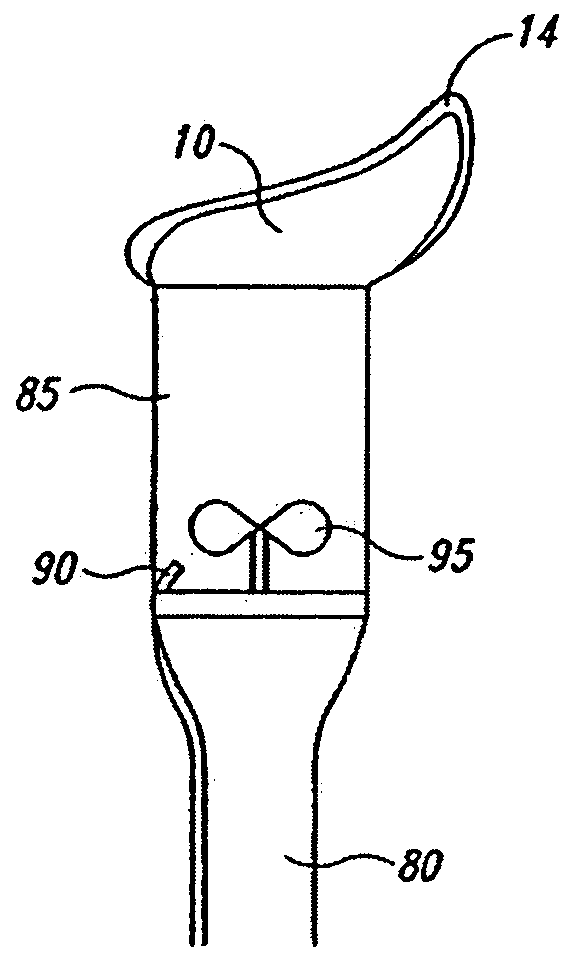Particle dispersion chamber for nasal nebulizer
a technology of particle dispersion chamber and nebulizer, which is applied in the direction of packaging, other medical devices, coatings, etc., can solve the problems of limited efficacy of medicine administered in this manner, insufficient, if not useless devices,
- Summary
- Abstract
- Description
- Claims
- Application Information
AI Technical Summary
Benefits of technology
Problems solved by technology
Method used
Image
Examples
example 1
[0082]A 21-year-old female subject was provided with the nebulizer 25 and was instructed to perform the Controlled Particle Dispersion Breathing Technique (BT). A TC-DTPA aerosol radiopharmaceutical was provided in the nebulizer 25 in a dose of 10 mci. After performance of the BT, a technesium imaging test was performed on the nasal sinuses of the subject. The technesium imaging test was performed at Swedish Medical Center in Seattle, Wash. The technesium imaging test allows for identification of nebulized particles in the ethmoid and sphenoid sinuses. The findings of the technesium imaging tests were of tracer activity in the ethmoid and sphenoid sinuses bilaterally. There was no activity in the maxillary or frontal sinuses. Communication between the nasal airway and ethmoidal and sphenoid sinuses was documented.
example 2
[0083]A 25-year-old male subject was provided with the nebulizer 25 and instructed to perform the Controlled Particle Dispersion Breathing Technique (BT). The nebulizer 25 was provided with TC-DTPA aerosol at a dose of 15 mci. The technesium imaging test was performed at Swedish Medical Center in Seattle, Wash. The technesium imaging test allows for identification of nebulized particles in the ethmoid and sphenoid sinuses. The findings of the technesium imaging study were that proton activity was greater in the ethmoid, maxillary and sphenoid sinuses bilaterally greater right than left. There was no tracer activity in the frontal sinuses. The aerosol was delivered via a nasal mask communicated with the ethmoid and sphenoid sinuses bilaterally but not with the frontal sinuses.
[0084]A representative sinus-bent image for the subjects in Examples 1 and 2 is provided in FIG. 22. FIG. 22 shows delivery to the ethmoid, maxillary and sphenoid sinuses via the nebulizer 25. Prior art FIG. 21 ...
PUM
 Login to View More
Login to View More Abstract
Description
Claims
Application Information
 Login to View More
Login to View More - R&D
- Intellectual Property
- Life Sciences
- Materials
- Tech Scout
- Unparalleled Data Quality
- Higher Quality Content
- 60% Fewer Hallucinations
Browse by: Latest US Patents, China's latest patents, Technical Efficacy Thesaurus, Application Domain, Technology Topic, Popular Technical Reports.
© 2025 PatSnap. All rights reserved.Legal|Privacy policy|Modern Slavery Act Transparency Statement|Sitemap|About US| Contact US: help@patsnap.com



